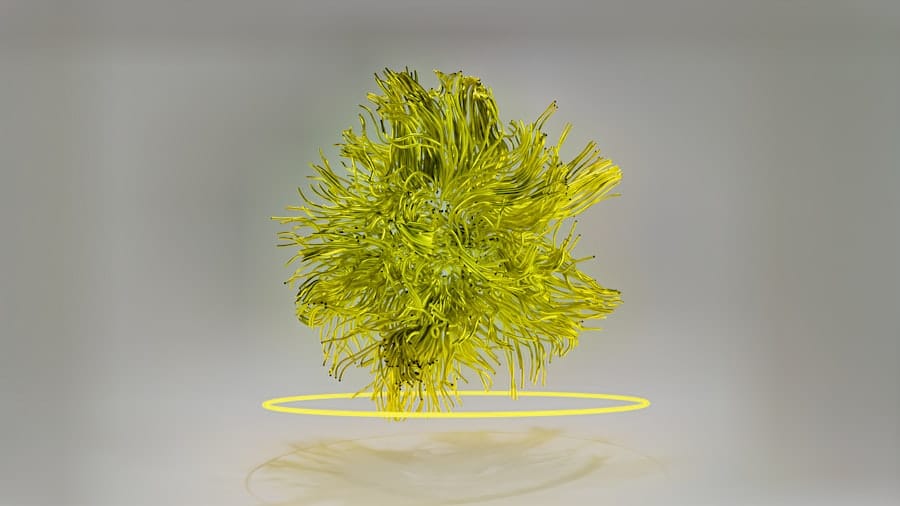Non-fungible tokens (NFTs) have emerged as a revolutionary technology that is reshaping the landscape of digital ownership and asset management. Unlike traditional cryptocurrencies such as Bitcoin or Ethereum, which are fungible and can be exchanged on a one-to-one basis, NFTs are unique digital assets that represent ownership of a specific item or piece of content. This uniqueness is secured through blockchain technology, which provides a transparent and immutable ledger of ownership.
The rise of NFTs has opened up new avenues for the tokenization of real-world assets, allowing for the representation of physical items in a digital format.
The concept of tokenization involves converting rights to an asset into a digital token on a blockchain.
This can apply to a wide range of assets, from real estate and art to intellectual property and luxury goods. By tokenizing these assets, owners can fractionalize their holdings, enabling multiple investors to own a share of high-value items. This fractional ownership model can significantly lower the barriers to entry for investors, allowing them to diversify their portfolios without needing substantial capital.
As the NFT market continues to evolve, the potential applications for real-world asset tokenization are vast, promising to transform how we think about ownership, investment, and value exchange in the digital age.
Key Takeaways
- NFTs are non-fungible tokens that represent ownership of unique digital or physical assets, and they are revolutionizing the way real-world assets are tokenized and traded on blockchain platforms.
- Real estate tokenization through NFTs allows for fractional ownership of properties, making it easier for investors to diversify their portfolios and for property owners to unlock liquidity.
- Tokenizing art and collectibles with NFTs enables artists and collectors to prove ownership, authenticity, and provenance of their works, while also creating new revenue streams through royalties and resale rights.
- NFTs and tokenization of intellectual property provide creators with a secure and transparent way to monetize their digital content, such as music, videos, and written works, through smart contracts and royalties.
- NFTs and tokenization of luxury goods and fashion items offer brands and consumers a way to verify the authenticity and provenance of high-end products, while also enabling new forms of brand engagement and loyalty programs.
- Tokenizing sports and entertainment assets with NFTs allows for the creation of unique digital collectibles, event tickets, and memorabilia, as well as new ways for fans to engage with their favorite teams and performers.
- NFTs and tokenization of financial instruments are transforming the way traditional assets like stocks, bonds, and derivatives are traded and settled, offering increased liquidity and transparency in financial markets.
- The future of NFTs and real-world asset tokenization holds great potential for further innovation, including the integration of augmented reality, virtual reality, and other immersive technologies, as well as the development of new standards for interoperability and cross-chain compatibility.
Real Estate Tokenization through NFTs
Democratizing Real Estate Investment
This democratization of real estate investment opens up opportunities for individuals who may not have previously had access to such markets. For instance, platforms like RealT have pioneered the concept of real estate tokenization by allowing users to purchase fractional ownership in rental properties through NFTs. Each property is represented by a unique NFT that signifies ownership rights, including the right to receive rental income proportional to the number of tokens held.
Enhancing Liquidity and Transparency
This model not only enhances liquidity—since tokens can be traded on secondary markets—but also provides transparency regarding property performance and income distribution.
A Shift in the Real Estate Market
As more investors recognize the benefits of real estate tokenization, we may see a shift in how properties are bought, sold, and managed, leading to a more efficient and accessible real estate market.
Tokenizing Art and Collectibles with NFTs

The art world has traditionally been characterized by high barriers to entry, with significant financial resources required to purchase original works. However, NFTs have disrupted this paradigm by enabling artists to tokenize their creations, allowing for fractional ownership and broader access to art investment. By minting an artwork as an NFT, artists can sell their pieces directly to collectors while retaining control over their intellectual property rights.
This not only empowers artists financially but also fosters a new ecosystem where art can be traded and appreciated in digital formats. A notable example is the sale of Beeple’s digital artwork “Everydays: The First 5000 Days,” which fetched an astonishing $69 million at auction as an NFT. This sale highlighted the potential for digital art to achieve valuations comparable to traditional masterpieces.
Furthermore, platforms like Foundation and OpenSea have emerged as marketplaces where artists can showcase their work and collectors can purchase NFTs representing ownership of unique pieces. The ability to tokenize art not only enhances liquidity but also allows for innovative revenue models, such as royalties on secondary sales, ensuring that artists continue to benefit from their work long after the initial sale.
NFTs and Tokenization of Intellectual Property
Intellectual property (IP) encompasses creations of the mind, including inventions, literary works, designs, symbols, and images used in commerce. The tokenization of IP through NFTs presents an opportunity for creators to monetize their work in new ways while maintaining control over their rights. By representing IP as NFTs, creators can establish verifiable ownership and provenance, making it easier to license or sell their work while ensuring they receive fair compensation.
For example, musicians can tokenize their songs or albums as NFTs, allowing fans to purchase exclusive rights or access to unreleased tracks. This model not only provides artists with an additional revenue stream but also fosters a deeper connection with their audience. Similarly, authors can tokenize their literary works, granting buyers unique rights such as limited editions or special access to future projects.
The ability to tokenize IP creates a more equitable landscape for creators, enabling them to leverage their work’s value while protecting their rights in an increasingly digital world.
NFTs and Tokenization of Luxury Goods and Fashion
The luxury goods market is often plagued by issues of authenticity and counterfeiting, which can undermine brand value and consumer trust. NFTs offer a solution by providing a secure method for verifying the authenticity of luxury items through blockchain technology. By tokenizing luxury goods as NFTs, brands can create a digital certificate of authenticity that accompanies each product, ensuring that buyers can verify its legitimacy before making a purchase.
For instance, luxury fashion brands like Gucci and Prada are exploring the use of NFTs to enhance customer experiences and combat counterfeiting. By linking physical products with unique digital tokens, brands can offer consumers proof of authenticity while also creating opportunities for exclusive digital experiences or limited-edition releases. This approach not only protects brand integrity but also allows consumers to engage with luxury items in innovative ways, such as showcasing their collections in virtual environments or participating in exclusive online events.
Tokenizing Sports and Entertainment Assets with NFTs

Tokenized Sports Memorabilia
The tokenization of sports memorabilia has opened up new opportunities for fans to purchase verified digital collectibles that hold intrinsic value due to their rarity and connection to significant moments in sports history.
NBA Top Shot: A New Market for Sports Collectibles
A prime example of the success of NFTs in sports is NBA Top Shot, a platform that allows users to buy, sell, and trade officially licensed NBA collectible highlights as NFTs. Each highlight is represented as a unique moment that fans can own and showcase in their digital collections, generating millions in sales and creating an entirely new market for sports collectibles.
Athletes and Personal Brands
Furthermore, athletes are beginning to tokenize their personal brands by releasing exclusive content or experiences as NFTs, further blurring the lines between fandom and investment.
NFTs and Tokenization of Financial Instruments
The financial sector is witnessing a transformation through the tokenization of financial instruments using NFTs. Traditional financial assets such as stocks, bonds, and derivatives can be represented as digital tokens on a blockchain, enhancing liquidity and accessibility for investors. By tokenizing these instruments, financial institutions can streamline processes such as trading and settlement while reducing costs associated with intermediaries.
For example, companies like CurioInvest are pioneering the tokenization of luxury cars as investment assets through NFTs. Investors can purchase fractional ownership in high-value vehicles represented by tokens on the blockchain. This model not only democratizes access to luxury investments but also allows for greater transparency regarding asset performance and valuation.
As regulatory frameworks evolve to accommodate these innovations, we may see an increasing number of financial instruments being tokenized, leading to a more efficient and inclusive financial ecosystem.
The Future of NFTs and Real-World Asset Tokenization
The future of NFTs and real-world asset tokenization is poised for significant growth as technology continues to advance and regulatory frameworks adapt to this new landscape. As more industries recognize the benefits of tokenization—such as increased liquidity, transparency, and accessibility—we can expect broader adoption across various sectors. The integration of NFTs into everyday transactions may become commonplace, transforming how we perceive ownership and value exchange.
Moreover, advancements in interoperability between different blockchain networks could facilitate seamless trading and transferability of tokenized assets across platforms.
As consumer awareness grows regarding the potential of NFTs beyond mere collectibles—encompassing real estate, art, intellectual property, luxury goods, sports memorabilia, and financial instruments—the demand for innovative solutions will likely drive continued investment in this space.
In conclusion, the intersection of NFTs and real-world asset tokenization represents a paradigm shift in how we understand ownership and investment in the digital age. As this technology matures, it holds the potential to redefine traditional markets while creating new opportunities for creators, investors, and consumers alike. The journey ahead promises exciting developments that will shape the future landscape of asset management and ownership.
There is a fascinating article on what NFT image is that delves into the world of non-fungible tokens and their application in the digital art realm. This article provides valuable insights into the concept of NFTs and how they are revolutionizing the way we perceive and trade digital assets. It complements the discussion on how NFTs are being used for real-world asset tokenization by shedding light on a specific aspect of this innovative technology.
FAQs
What are NFTs?
NFTs, or non-fungible tokens, are unique digital assets that represent ownership or proof of authenticity of a specific item or piece of content using blockchain technology.
What is real-world asset tokenization?
Real-world asset tokenization is the process of representing physical assets, such as real estate, art, or commodities, as digital tokens on a blockchain. This allows for the fractional ownership and trading of these assets in a digital format.
How are NFTs being used for real-world asset tokenization?
NFTs are being used to tokenize real-world assets by representing ownership of the asset through a unique digital token. This allows for the fractional ownership and trading of the asset on a blockchain platform.
What are some examples of real-world assets being tokenized using NFTs?
Examples of real-world assets being tokenized using NFTs include real estate properties, artwork, collectibles, and even intellectual property rights. These assets are represented as unique digital tokens on a blockchain, allowing for ownership and trading.
What are the benefits of using NFTs for real-world asset tokenization?
Some benefits of using NFTs for real-world asset tokenization include increased liquidity and accessibility to traditionally illiquid assets, fractional ownership opportunities, and the ability to verify ownership and authenticity through blockchain technology.
What are the potential challenges or risks associated with using NFTs for real-world asset tokenization?
Challenges and risks associated with using NFTs for real-world asset tokenization include regulatory uncertainty, potential for fraud or counterfeit tokens, and the need for secure and reliable blockchain infrastructure. Additionally, the valuation and pricing of tokenized assets can be complex.

